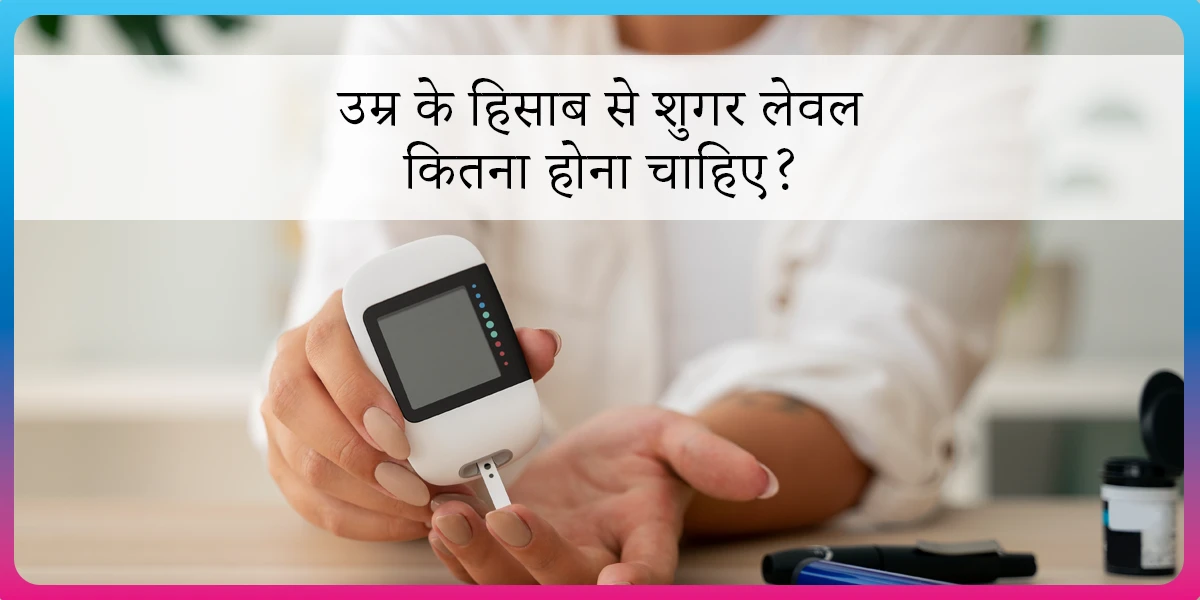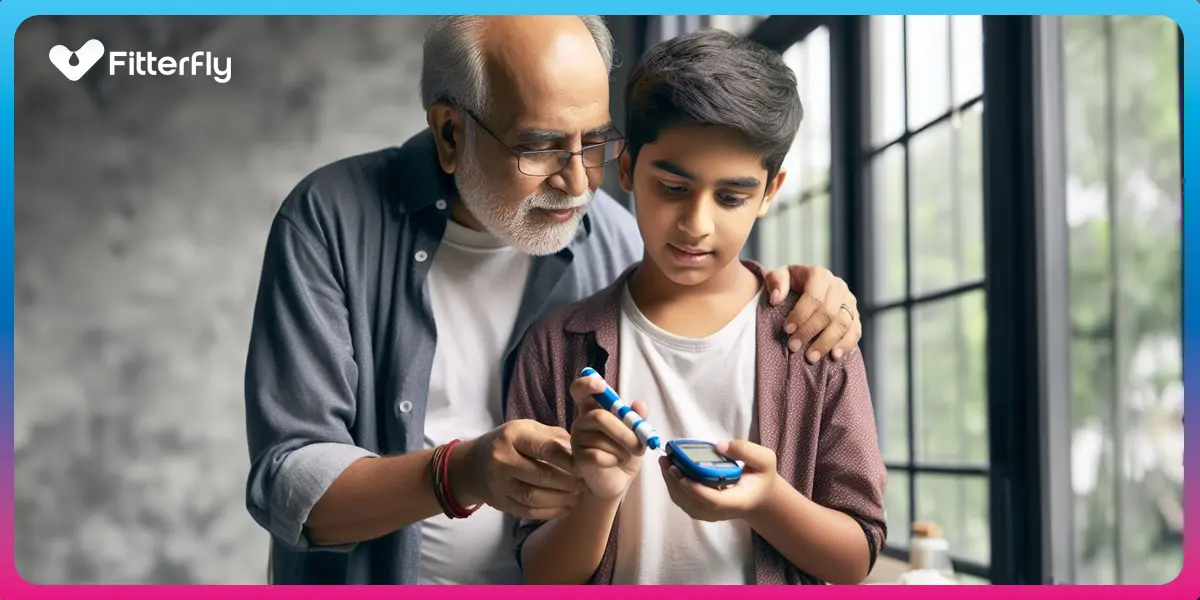Type 2 Diabetes Treatment and Management

When it comes to type 2 diabetes treatment and management, there are various ways in which you can manage the condition, like lifestyle changes, medications, and therapies. If you follow your line of diabetes treatment and comply with it, you can keep your blood sugar levels in control.
If you are living with diabetes, you probably know how important it is to stay on track with your diabetes treatment plan to avoid complications and lower the dependence on medication.
Can type 2 diabetes be cured?
While there’s no magic cure for type 2 diabetes treatment, there’s good news: type 2 diabetes can be reversed and managed; if you catch it early and take the right steps, you can turn it around and keep your blood sugar in check. This is often called diabetes remission.
In the case of type 2 diabetes and treatment, if you can keep your HbA1c levels (under 6.4 %) without medication for more than a year, you are believed to be in complete remission; if you can do so for more than 5 years, you are in prolonged remission. Yes, this is achievable with proper diet, exercise and lifestyle modifications.
But there are some limitations. If the diabetes diagnosis is done during the initial five years, diabetes treatment and reversal are possible.
However, as the condition progresses, it might be challenging to reverse the condition. However, proper management and the right treatment, more specifically in the case of type 2 diabetes treatment, ensure that one is less dependent on medications and the related complications are few.
How Can Type 2 Diabetes Be Cured? | Effective ways for Reversal
Reverse diabetes: Is it possible for everyone?
As mentioned earlier, diabetes reversal (more specifically, type 2 diabetes treatment) is possible for people whose diagnosis happens in the initial five years. Beyond that, it becomes difficult to reverse the condition.
Also, if any of the major organs get affected, it becomes difficult to reverse the condition. However, one can have a complication-free life with fewer doses of medication if managed the right way.
To know if you can reverse your diabetes, try our Fitterfly Diabetes Reversal Calculator. The higher the score is, the better your chances of reversal.
Diabetes treatment: What steps we need to take
While diabetes is becoming a widespread ailment, and people are looking for diabetes treatment, every person living with it needs a different approach. Also, one might have to try different permutations and combinations of diabetes treatments and therapy to manage it smartly.
Here are a few of the most common treatment options to keep the blood sugars in check:
1. Weight loss
Obesity, or being overweight, is one of the risk factors and triggers for type 2 diabetes, especially for people who have abdominal obesity.
Studies have noted that abdominal fat produces certain hormones and toxins, making the body’s cells resistant to insulin. Over time, it can also impair the functions of the pancreas beta cells, which secrete insulin.
People who have been diagnosed with diabetes are advised to reduce their body weight by 5 to 7 percent. For example, if you weigh 80 kilos, reducing your weight by 6 to 9 kilos can drastically improve your insulin sensitivity and reduce your blood sugar levels.
But losing some kilos from your frame isn’t the end of the story. You must constantly strive to prevent weight gain and follow a proper exercise regime. Weight gain after losing some kilos can make your blood sugars soar again.
Weight loss affects your HbA1c levels, too (blood sugar readings of the past three months). This test measures the amount of sugar that is bound to the hemoglobin of the red blood cells. In diabetes treatment and management, keeping the HbA1c in control is critical.
Here are some other ways to lower your HbA1c levels.
Suppose you are wondering how to start your weight loss journey. We suggest starting slow with cardio activities like brisk walking, jogging, aerobics, Zumba, or swimming and gradually adding weight training to your exercise plan.
When well executed, a proper cardio and strength training plan can help lower blood sugar levels, lose weight, improve muscle strength and flexibility, boost insulin sensitivity, and more.
We understand that planning a proper exercise schedule to lose weight and control diabetes might be a bit tiresome for anyone, especially if you have been sedentary for a long time.
2. Diet management
Along with weight loss, diet is essential in diabetes treatment and management. Understanding that your foods significantly affect your blood sugar levels is crucial.
While cutting down on carbohydrate intake is essential, it is also necessary to focus on other aspects of your diet – proteins, fats, fiber, and micronutrients such as zinc, magnesium, potassium, calcium, iron, and vitamins. A lack of micronutrients can also affect blood sugar readings and other major functions of the body.
To know your chances of Diabetes reversal, take the Diabetes Reversal TestDiabetes Reversal
Calculator
Your carbohydrate load should not exceed 45 to 50 gms in your main meals. Here is how an ideal meal plate should look –
- Half plate with vegetables cooked, steamed, or tossed – boiled veggies or curries are ideal; ensure you have a bowl of salad included.
- A quarter of the plate with proteins – meat, eggs, legumes, pulses, tofu, cottage cheese, or paneer
- The other quarter with complex carbohydrates like – brown rice, chapati, millet, daliya, etc. Choose foods that have a good amount of fiber in them, too.
3. Physical activity
One aspect of diabetes treatment and management is lifestyle modification. Make it a habit to be more active in your day-to-day life. For example, ditch the car whenever possible and walk the extra mile.
Being active helps lower blood sugar levels, improve insulin use, and help muscles utilize glucose, boosting energy. So, get active! These changes go a long way in keeping you off the danger line with diabetes.
Dr Sheryl Dsouza – Physiotherapist at Fitterfly, will help you understand what happens when you perform any physical activity. Watch the video below.
4. Oral medication
Sometimes, it is impossible to bring down the sugar levels with just lifestyle modifications, especially if your diabetes has progressed a bit too far. In such cases, your doctor might provide you with oral medications to control your blood sugar level.
Different kinds of pills are available. Some restrict the breakdown of glucose, some initiate the pancreas to secrete insulin, and some drugs might help insulin work better. Oral medications are prescribed according to one’s needs and health status.
This is a reason why you should never take over-the-counter drugs for diabetes or stop taking pills on your own. Always keep your doctor in the loop about your medications and any changes you feel in your condition.
5. Insulin therapy
If your diabetes is not controlled with diet and lifestyle changes or oral medications, your doctor might prescribe insulin therapy. Different types of insulin vary on how quickly they begin to work and how long they last. Therefore, your doctor is the best person to decide what insulin suits you.
In the past, it was thought that people who took insulin had to be dependent on the pricks for life. However, it has been observed that with proper guidance and lifestyle management, one can go off insulin, too, depending on how the condition has been controlled or progressed.
To know your chances of Diabetes reversal, take the Diabetes Reversal TestDiabetes Reversal
Calculator
6. Regular check-ups
For your diabetes treatment (especially type 2 diabetes treatment), it is necessary to follow up with doctor’s appointments and checkups as part of your treatment plan. Regular HbA1c reports and regular foot and eye checkups might be conducted to ensure the elevated sugars have not damaged the nerve extremities.
7. Mental well-being and stress management
This is the most ignored part of diabetes treatment and management. Many people fail to acknowledge the fact that stress and anxiety can affect blood sugar levels.
In fact, prolonged stress can lead to depression, which can worsen blood sugar readings and vice versa. Addressing mental health issues can have a calming effect on your mind and keep blood sugars in control.
However, sometimes, the stress of a diagnosis disturbs one mentally and makes it challenging to stick to the treatment plans. So, make sure to talk to a therapist if you need help.
FitterTake
Management of diabetes needs some support and care. At Fitterfly, our coaches will provide you with all the necessary support and ensure the best care and outcomes in this journey to make you diabetes free.
Your mental well-being is just as crucial as your physical health regarding diabetes. Experience a holistic approach with the Fitterfly Diabetes Prime Program.
🎥 Meet Nupur Raheja, a 38-year-old IT Professional battling diabetes, high blood pressure, and high cholesterol. Nupur was determined to change her narrative and transform her life with Fitterfly.
Watch the video below to learn how Fitterfly’s personalized guidance and expert coaching helped Nupur achieve her health goals. From tailored nutrition plans to targeted physiotherapy, learn how she overcame challenges and built sustainable habits.
Ready to take charge of your diabetes? Give us a quick missed call at 08068507599, and we’ll contact you!
Reduced HbA1c by HALF in 6 months


6.6%
Happy members
EMI
Guarantee
4.8/5
Diabetes Prime Program
This blog provides general information for educational and informational purposes only and shouldn't be seen as professional advice.
Frequently Asked Questions
What medicines are used for Type 2 Diabetes?
The treatment for Type 2 Diabetes is divided into two types, such as oral medications (oral hypoglycemic drugs) and injectables (insulin). Consult your doctor depending on your condition fot the treatment of type 2 diabetes.
What types of insulin can people with diabetes use?
Depending upon the duration of action, there are different kinds of insulin for example: Rapid-acting, Short-acting, Intermediate-acting, Long-acting etc Depending upon your requirements, your doctor will pick the best one for the treatment of type 2 diabetes.
How do people take insulin?
nsulin can be taken with the help of: Vial and syringe shot Insulin pen Insulin pump
Can you manage diabetes on your own?
You can manage your diabetes when it is in the early stage, on your own with proper lifestyle modification, eating healthy, staying active and checking your blood sugar. But it is always recommended to get in touch with your doctor & healthcare experts for better management.
How long does treating diabetes take?
Diabetes is a chronic condition which can be kept under control. Though it cannot be cured completely, it can be treated with the right care to stay healthy.
What is the best treatment for type 2 diabetes?
The treatment for type 2 diabetes involves lifestyle modification, diet changes, exercise and medicine. Your doctor will help you find the right mix for you.
How much does type 2 diabetes treatment cost?
The costs of type 2 diabetes treatment depend upon various factors such as medicines, doctor visits, monitoring cost, lab investigations costs, etc and whether you have insurance.
How much does diabetes medication cost?
The price of diabetes medication can vary depending upon the type of medication, class of medicine, from where you are purchasing it, and the discount given by the pharmacy if any. Usually the generic version is cheaper than the branded ones.
What is the most common medication for type 2 diabetes?
Metformin is one of the commonly prescribed medicine for type 2 diabetes. It helps lower your blood sugar levels, control weight, etc.
What other shots for type 2 diabetes are there, not counting insulin?
Apart from insulin, other injectable shots like GLP-1 (Glucagon-like peptide-1) receptor agonists exist. These help your insulin work better and keep your blood sugar steady. GLP agonists are the medications used for the treatment of type 2 diabetes and obesity.
What are the general side effects can diabetes medicines have?
Medicines for diabetes can sometimes cause stomach upset, weight changes, or low blood sugar. Your doctor will talk to you about these and how to handle them.




















